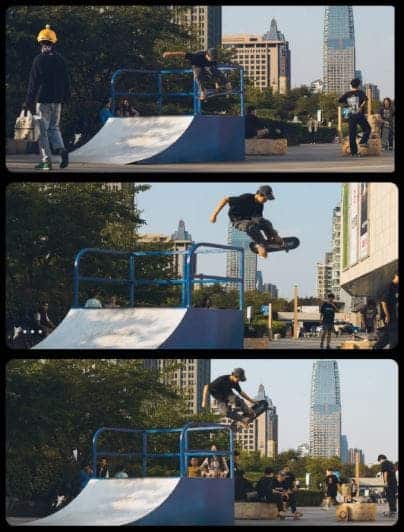A good image is very important, especially for photos that are posted on social media. It can quickly grab the attention of the viewer which may lead to further viewing. During holidays, everyone is sharing photos taken during their travels. Well, only a few wonderful photos catch the attention of people and leave a decent impression. Taking good photos is an art that requires a combination of skills and techniques. While editing can enhance the quality of a photo, it is not always necessary to produce a great image. In this article, we will discuss how to snap good images without proper editing skills.

1. Photo Style
If you want a photo to attract attention, you need to enhance the style of the photo. Of course, this does not mean that you need excessive post-production to create an exaggerated effect. However, you can start by controlling the characters you want in the photo itself. Let’s take a look at how we can improve the photo style
a) Uniform colours
While many may not pay attention to colours when taking images, it is very important. When there are too many colours clouding an image, the overall effect may be clashing. Thus, there is a need to unify the colours as much as possible.

The image above shows a set of nine photos taken in different environments but have similar colours. This gives people a comfortable and harmonious feel. Although there are many photos, the overall appearance is not cluttered because the colours are very unified. This also makes the style of the photos very prominent, making people want to look further.
b) Unified composition
When taking images, make sure that all the components of the image are unified. For instance, if the background of the image is not the focus, then avoid capturing much of the background. Also, when capturing a group of people, ensure that they are positioned in the middle.
It is important to consider the placement of your subject, the background, and any other objects in the frame. Use the rule of thirds to create a balanced composition. This involves dividing the frame into thirds both horizontally and vertically, and placing your subject at one of the intersections.
When taking a photo, it is important to have a clear subject. This will help to create a strong focal point and make the photo more interesting. Avoid cluttered backgrounds and try to keep the focus on one subject at a time.
c). Photo Posting
When posting multiple photos, the order of the photos will also affect the display effect. For example, when posting 4 or 9 photos, the entire photo will be displayed in a “square” shape. This looks more appealing to the eyes.

Gizchina News of the week
Also, 3 pictures and 6 pictures will be displayed in a “rectangular shape”, which also looks comfortable. However, 5, and 7 pictures will form an incomplete “rectangle”, and the look and feel will be a little worse.

Among multiple photos, the first one and the photo in the center receive relatively more attention. For example, in a nine-square grid photo, the first and fifth photos are more important. We can put the key photos, such as group photos of people, in this position.

2. Photo location
Do not settle for less when it comes to choosing a location for photos. This will affect the overall appearance of the image. If you choose a slum with some unpleasant sights, then the image may not be the beauty that you expect it to be. Choose a location with calm and very clean colours – bright colours like white or cream do a good job.
3. Get to know your camera
Before you start taking photos, it is important to understand the capabilities of your camera. Take some time to read the manual and learn about the different settings and features. This will help you to take better photos and make the most of your camera.
4. Learn how to use light
Lighting is one of the most important factors in photography. It can make or break a photo. Learn how to use natural light to your advantage. Try to avoid harsh, direct sunlight and instead look for soft, diffused light. You can also experiment with artificial lighting, such as lamps or flashes, to create different effects.
5. Experiment with exposure
Exposure refers to the amount of light that enters the camera. It can be adjusted using the aperture, shutter speed, and ISO settings. Experiment with different exposure settings to create different effects. For example, a low aperture can create a shallow depth of field, while a high shutter speed can freeze motion.

6. Use photo accessories
There are a variety of accessories that can help you to take better photos. Tripods can help to keep your camera steady, while filters can be used to adjust the colour or contrast of a photo. Experiment with different accessories to see what works best for you.
Don’t be afraid to try new things and experiment with different techniques. Some of the most interesting photos come from unique and unexpected ideas. Look for interesting angles and perspectives, and try to capture the essence of your subject in a creative way.
Conclusion:
Taking good photos is a skill that can be learned and improved over time. By following these tips, you can snap good images without proper editing skills. Remember to get to know your camera, learn how to use light, compose each photograph, focus on one subject at a time, experiment with exposure, use photo accessories, think outside the box, and ask for feedback. With practice and patience, you can take great photos that capture the beauty of the world around you.





